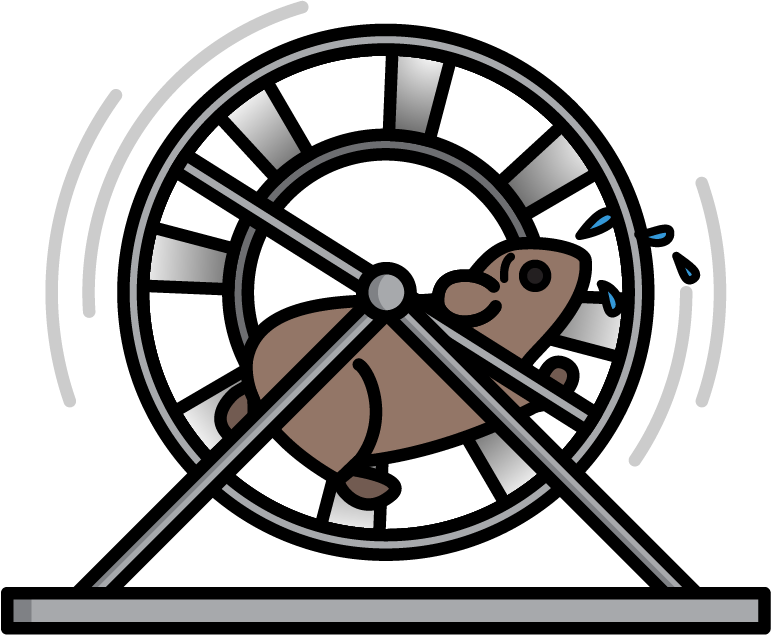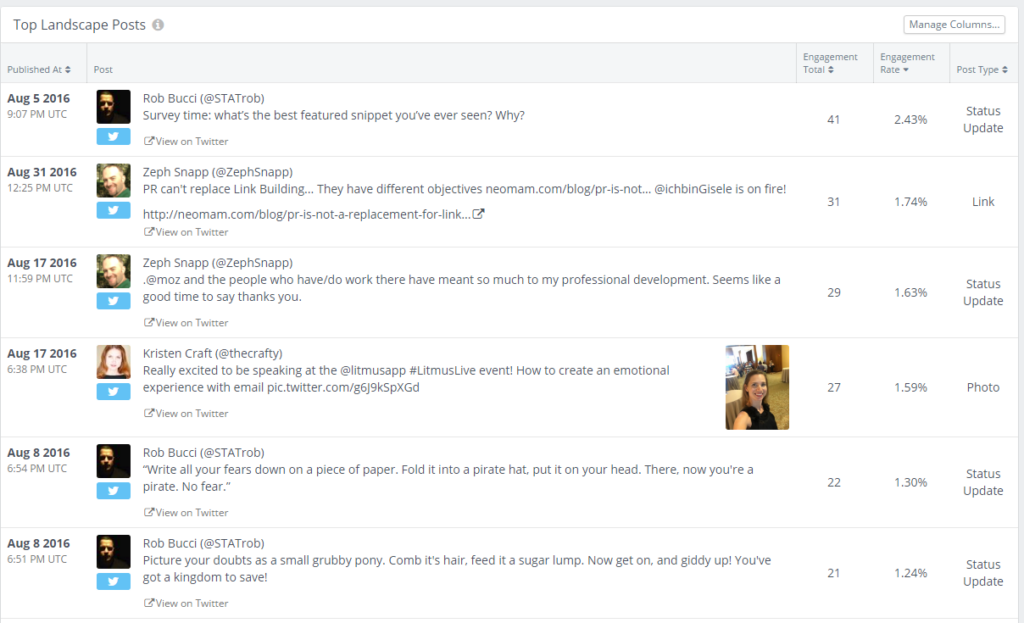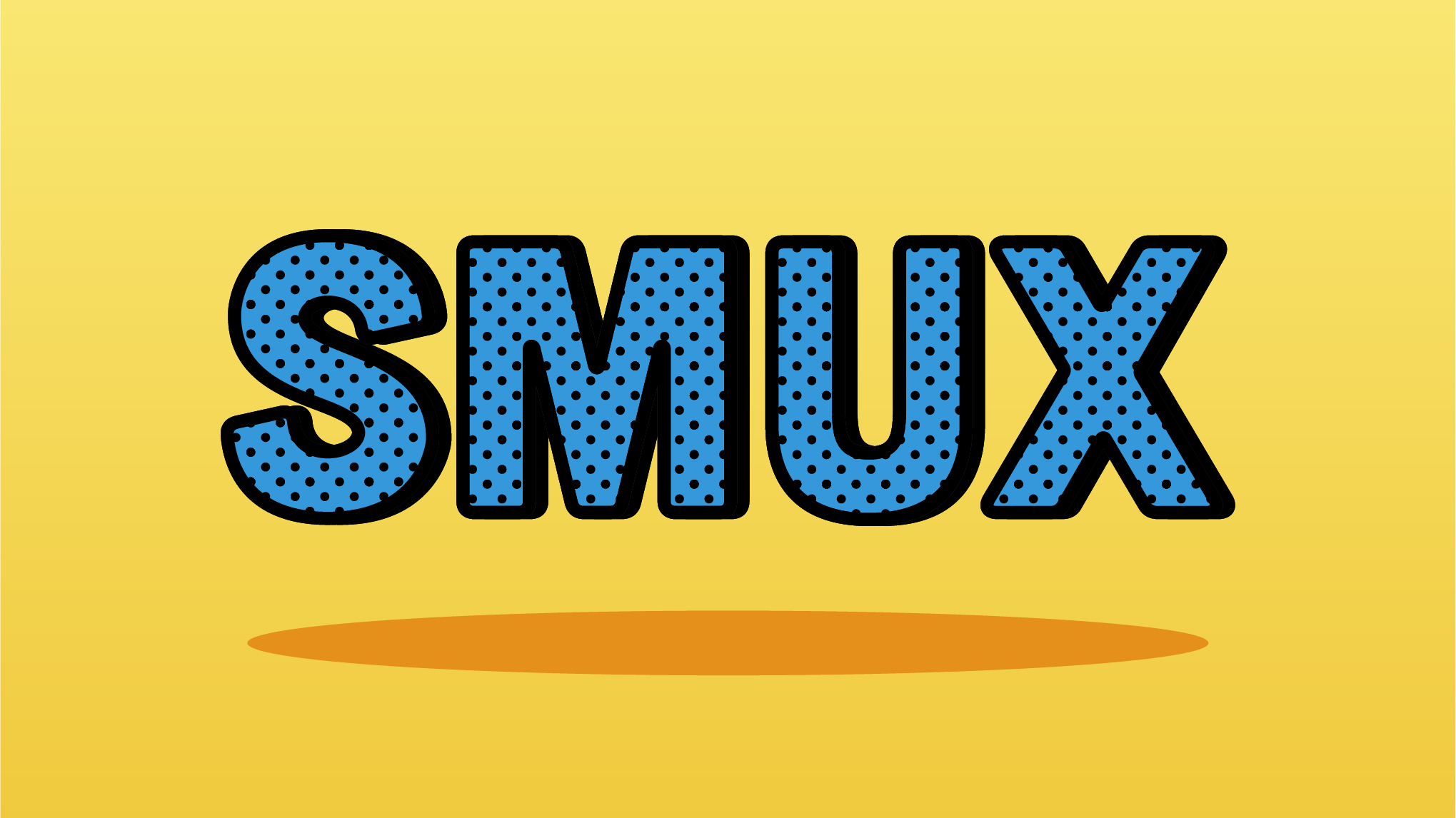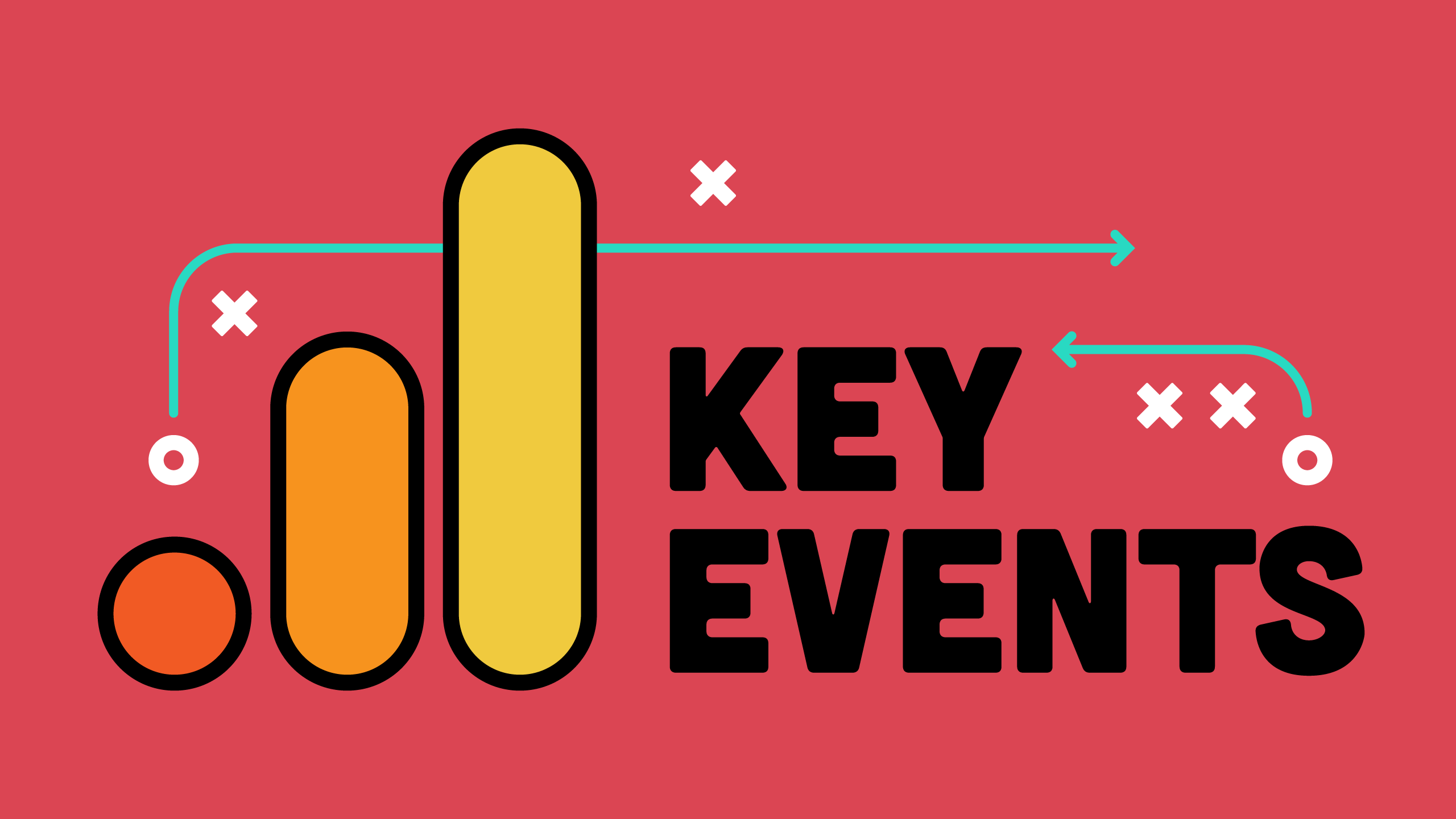It’d be weird to see a Facebook post on a billboard, right? So why are we still taking billboards and posting them on Facebook like they work the same way?
Social media marketing focuses heavily on “rules”. Perfect post length. Perfect image size. Perfect time to post. Perfect number of times a day to post. But those rules don’t help you understand and speak to your audience. Social media is not just about tactical implementation — it’s about what your audience needs to hear and whether or not they think you’re worthy of their time.
No one wakes up in the morning, grabs their phone and says “I can’t wait to engage with my favourite brand on Facebook!”
Whether you’re agency-side or in-house, you need to rewire how you approach social media. We all seem to have lost sight of what made social media so exciting in the first place. We’ve retreated to our comfort zone where we try to make this new medium fit our old paradigms.
Even the words we use to describe social media metrics are all wrong. Audience, impressions, reach — these are very much “I’m talking to you and you can’t talk back” metrics. That is not how social media works.
Your social media can’t be all group hugs and high fives. There is a way to balance group hugs with actual results. You need to rewrite your marketing strategy NOW — before your competition beats you there.
Introducing SMUX
We call this rewired approach: “Social Media User Experience (SMUX).”
SMUX is about knowing when and how your market wants to pay attention to you, and giving them what they want at that time. SMUX goes beyond personas and audience research — it’s about using data to build what we call attention research.
Attention Research
Attention research is discovering what actually gets your market excited. There is a huge difference between someone scrolling through their Facebook feed, liking a photo of a kitten, watching someone make deep fried mac and cheese jalapeno popper perogy nachos, and liking a motivational quote — wow, look at all that engagement! — versus that same person actually becoming invested in what you have to say or sell.
There are a few different ways to do attention research, but one of our favourites uses RivalIQ. Often, RivalIQ is used to track what your competitors are up to — how’s their social doing, are they running AdWords ads, etc. It’s time to go beyond that!
First, make a list of the social media accounts of your best customers. These can be Facebook, Twitter, or Pinterest accounts — wherever your market gathers. Now, create a landscape in RivalIQ using this list. In the space where it says to enter the website, put in the social profiles that you want to analyze instead. For this sample, we made a landscape of MozCon speakers.

Next, go into the Social Posts section and see what the top posts are in terms of different engagement metrics. Check out things like:
- Popular hashtags
- When they published
- When engagement occurred
After a quick review, you’ll see things like: Thursday is a busy day, most engagement actually happens late at night, and while Saturday is a very quiet day in terms of posting, it’s slightly better in terms of engagement. Based on this kind of information, you can start to build a profile of your market (that is built from facts about your best customers).
Attention research is the foundation of SMUX.
The Elements of SMUX
What makes a strong SMUX is a mix of six things that build upon that foundation of Attention Research.
- Psychographics
- Analytics
- Platform
- Message
- Intent
- Play
Psychographics
If you’ve spent time on personas, you know that the more specific you get, the more effective your marketing will be. Instead of making a persona based on a generalization, like “women who are around 40”, build representative personas based on aspirations, things that make people tick, and their values and attitudes.
Chatelaine magazine did a survey of Canadian women aged 35 to 45, called #ThisIs40ish. These women were asked questions including “are you a feminist?” and “do you look good naked?”. This is how these women answered the question “what makes you unique?”
After seeing this, you know that you would not market to each of these women the same way — your market isn’t a mass of people with the same characteristics. We know that you know this, but sometimes it’s easier to take the demographics route and hope that your reach encompasses the right person. Easier ≠ Better.
To build psychographics, try picking up the phone and interviewing your best customers. Ask them things that have nothing to do with your business — try questions like:
- What kind of phone do you have?
- What is the last charity you donated to and why?
- What kinds of things do you share on Facebook?
Go back to your attention research and combine it with what you found out on the phone. You’ll be surprised by what is capturing your audience’s attention.
Analytics
This is where you separate out the tactical metrics from the strategic metrics.
First, let’s define what we mean by strategic metrics and tactical metrics. We recommend watching Dana’s talk from MozCon 2014 called Prove Your Value. Strategic metrics are the metrics that move the business needle and relate directly to your overall business goals — metrics like “lifetime customer value” or “ticket sales” or “customer referrals”.
Tactical metrics are things like “engagement rate” or “bounce rate”. Tactical metrics are important to know, but they don’t always relate directly to driving you closer to your business goals.
Digital marketers are really bad at only reporting on the tactical metrics and not the strategic ones, because tactical metrics are easy and are what our tools give us.
All of those articles about “10 rules for social media domination” and “13 social media metric rules to make you a ninja guru” focus on tactical metrics. To go beyond tactical metrics you have to do math and actually analyze everything. It’s a lot of work, but it’s better than just hoping for the best.
One of the bad side effects of this focus on tactical metrics is that it ends up driving decision making about where you should spend your time. This results in the myth that for social media, if you post more, you get more. So poor social media managers get stuck on this hamster wheel of shoving out updates as often as possible, making sure that all their Buffer boxes are filled, and not being able to take the time to think whether or not each post will resonate.

We’ve seen clients who are stuck in that pattern — you probably have too! And to be quite frank, we’re jumping off a hamster wheel of our own and are currently evaluating how Kick Point uses social media.
We have a client who was consistently top in their landscape for volume of posts and engagement on a platform, but their actual strategic metrics weren’t happening at all. In fact, only 5% of their website traffic could be attributed to social media. After a significant change in how they approached that platform, they’ve increased social traffic to their site by 280% over the past 12 months. What they did was make their posts SMUXier. They stopped focusing so much on the tactical metrics and went all out on the strategic ones.
Platform
Ask yourself — where is the right place for this post? And we’re not just talking about Twitter vs Facebook, but should it be an image, a video, a survey, a blog, or some combination of the above? You need to ask yourself better questions before diving into social media.
For example, Channel 4 News in the UK has done exceptionally well on Facebook, growing their monthly video views from 5 million to 200 million. Facebook is doing so well for them that they have spun off two additional pages for different types of content. They knew it was the right platform for them, they knew video was the way to go, and they understood that people watch Facebook on many different devices, and know that they often have their sound off.
Channel 4 News used square video and captions. They understood the platform and maximized it — they provided good SMUX.
When you go back to your market landscape that you created in RivalIQ and look at top posts, you can see what type of post was the leader.

Use this information to determine what types of posts resonate with your market. You can also export all of this to a CSV, and do some advanced analysis in pivot tables.
Hit pause and go back to the basics — are you even on the right platforms? If your Facebook page feels like a waste of time and your market isn’t using Facebook, delete the page. For example, Eat24 broke up with Facebook back in March 2014 and they said it was the smartest marketing decision they made that year. All that time and money they pushed into Facebook was free to go elsewhere be impactful.
Deeply consider which platforms are right for your market and embrace walking away from the ones that aren’t.
Message
Message is saying the right thing, in the right way. Not just for your and your brand, but also for your market. Having a brand strategy (particularly a brand voice) and actually using it goes a long way to creating a strong message.
People like to talk to people who are like them, so think about how your posts make can your market feel comfortable. Go back to Rival IQ and review those top posts again. You can search the post content and see if your market is using the same language that you want to use. In particular, use the keyword research from your search marketing and see which of those words your market is using on social media.
For example, we saw in our sample set that MozCon speakers posted 1190 times. Of that, only 28 posts mentioned SEO, 23 posts mentioned search, nine mentioned social, and 45 mentioned content. Interesting! Export this information to a CSV to do advanced analysis with the data to look for trends and patterns.
You should also go beyond “on-brand” — please consider inclusiveness as well. Social media is still about community. Are you drawing people in or alienating people with your language? This can be as simple as saying “get your tickets now” versus “see you there”.
Intent
Intent is so crucial. Remember that hamster wheel? Your goal on social media shouldn’t be to hit your posting targets. If posting X number of times a day is a KPI for your job, get in touch with us, we’ll fix it together.
The goal of every social post cannot simply be higher engagement. That is not enough.
It’s 2016. Step up. What are you actually contributing to the noise?
Ask yourself that before everything you post: What are you contributing? Why are you tweeting out that link? What’s the goal of sharing that video on Facebook?
Look at your personas, look at your keyword research, look at everything else we’ve discussed here, and think about your goal. How will your post contribute to your strategic metrics, not just tactical ones?
Another big part of intent is not just in the broadcast, but in the interaction. Consider how you handle customer service issues. Why do you take complaints to a direct message immediately? Are you embarrassed that someone is mad at your company?
If you’re post is about something you want your followers to do, like enter a contest for example, does your post have the right link? Is the contest easy to enter on the device they are using? How hard do people have to work to do what you want them to do?
Is it easy for your market to have a good #SMUX while carrying out your intent?
Play
Play is why Snapchat has more users than Twitter. Why would you hang around a boring place like Twitter when you can turn your face into a taco on Snapchat?

Did you know that 224 million people turned their face into a taco (courtesy of Taco Bell) on Cinco De Mayo? Or that more people used Gatorade’s Super Bowl sponsored Snapchat lens than actually watched the Super Bowl? What about the fact that the average user plays with a Snapchat lens for 20 seconds? That’s a heck of a lot longer than your boring (and ignored) pre-roll on YouTube.
Everyone loves to play. Emotion is at the very heart of marketing, and play carries some of the strongest emotions. It reminds us of childhood and gives us permission to goof off. And we all know that brief play breaks result in better productivity at work! That’s how we justify our at-work Reddit time.
Play may seem like the easiest element of SMUX to get right, but it’s harder to be playful than you’d think. You may think that your industry is boring and that you have no way to make it playful. But play can be more than a taco face.
Let’s say you’re a funeral home — how do you bring play to your social media? I would encourage you to check out South Side Memorial Chapel in Edmonton. Here’s a sample:
Don't think of us as just your last stop…
We're also a Poke stop! Have fun & stay safe!#PokemonGO #yeg
— South Side Chapel (@SouthSideChapel) July 23, 2016
And that tweet isn’t just a one-off. They are regularly fun and playful, while still being respectful. This funeral home is located in an area that hosts a massive theatre festival for two weeks each summer. It happens right outside their door, and this year they offered tours:
If you find yourself in @oldstrathcona in between @edmontonfringe shows looking for something to do……why not?#yeg pic.twitter.com/yXl7wTzssl
— South Side Chapel (@SouthSideChapel) August 11, 2016
Not only did they have a great turnout for the tours, but they got local media coverage out of it.
Now What?
SMUX can’t be approached like a Venn diagram. Think of it like building blocks. Some elements will be easier than others depending on what you offer, and on the strength of your brand voice and social media presence. Think of SMUX like a pyramid — there will likely be some things that you can look at and say “okay, we’re doing that now”, other things that you’ll say “we do this sometimes” about, and one thing that is your “I don’t know how we’ll get there, but we will”.
Pick three elements of SMUX that you’ll focus on for the next few months. Once you have those three elements accomplished on a consistent basis, then pick your next element to focus on.
SMUX is a process, and it will take practice.
When SMUX comes together, it’s about empathy. Your customers become more than page views, they’re real people. When you talk about a 1% conversion rate, what you’re really saying is that you failed 99% of the people who came to your site. How do you make that better? Figure out how to give your market what it deserves.
We all see the same articles all the time: 19 rules for this and 21 rules for that. People will always write those posts, and they will continue to get shared, but what are they really saying? When you read them, remember that no matter what rules someone else writes down, you need to provide your market with good SMUX.
The only rules you need to follow on social media are 1. do your research, 2. keep it in your brand voice, and 3. you know, actually BE social. Rules are made for breaking though, so remember to evolve yours as your market changes.
Put your market first, and rules second.
In closing, break the “rules” and do something that’s right for your market and your business.
When you do that, you’ll build the right SMUX.




